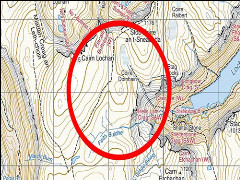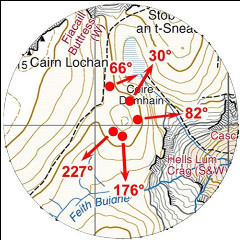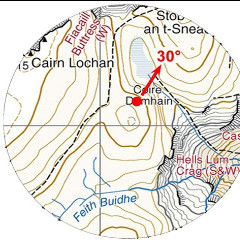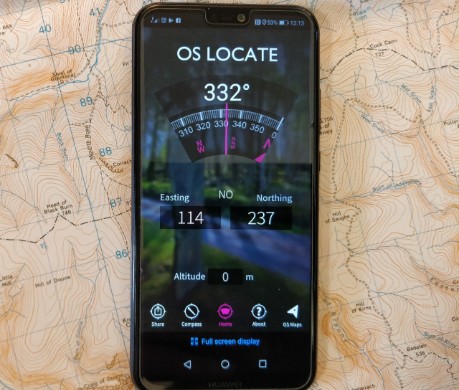Navigation in the mountains is usually relatively straightforward when the weather is good. But when the cloud descends and the weather turns foul, then it can be easy to lose track of where you are.
First thing is: you’re not ‘lost’. Lost has an air of permanence. Be positive and think of yourself as temporarily misplaced. Because there are many ways to find your location again and get back on track.

When the landmarks disappear into the mist it can be hard to figure where you are
Don’t panic! It’s easy to get alarmed, especially if the weather is poor and the daylight hours limited. But panic makes things worse rather than better. Stay calm and don’t do anything rash. Don’t simply start walking in different directions changing bearings every minute or two in the hope that things will be sorted. You need to tackle the problem in a more controlled manner. So, stop and consider your situation and begin to gather some information. In other words, do a bit of research.
Having gathered as much information as possible then you need to plan what to do and take action. That plan has to be controlled and involve actions that can be retraced should they not work out. This is what you can do.
If it transpires that nothing works and night time is fast approaching, then rather than stumbling in the dark with little sense of direction or knowledge of what terrain may unfold, you might consider staying fast on the mountain until daybreak and clear weather. If you have a mobile phone and a good signal then try to contact friends to let them know of your plans.
Using slope aspect can be a very useful tool to help you relocate. In its simplest form just use the points of the compass - north, east, south and west - to work out which direction the slope you are on is facing and then look at the map to find the slope which faces this way.

Slope aspect can be used more precisely by taking a bearing of the direction in which the slope faces.
Let's imagine we have become disorientated somewhere within the area shown here.
We know we haven't gone far and we're somewhere within this circle of map.
We've taken a bearing of the direction in which the slope we are on drops away.
There can be slopes of very different directions all located within a small area. The task is to find out which slope you are.


Let's assume the bearing we took of the slope on the ground was 30. This would mean that you are looking roughly down the NE aspect of this small knoll. This information should help you plan which way to travel next.
This Glenmore Lodge video explains how you can use slope aspect to help find your position.
Download the free OS Locate app onto your phone. It's a simple, quick and free app which shows your location in a OS Grid Reference format which you can transfer onto your map to confirm your location.
Remember, any form of modern navigation technology should be viewed as an additional ‘tool of the trade’ to add to your navigation tool box.
